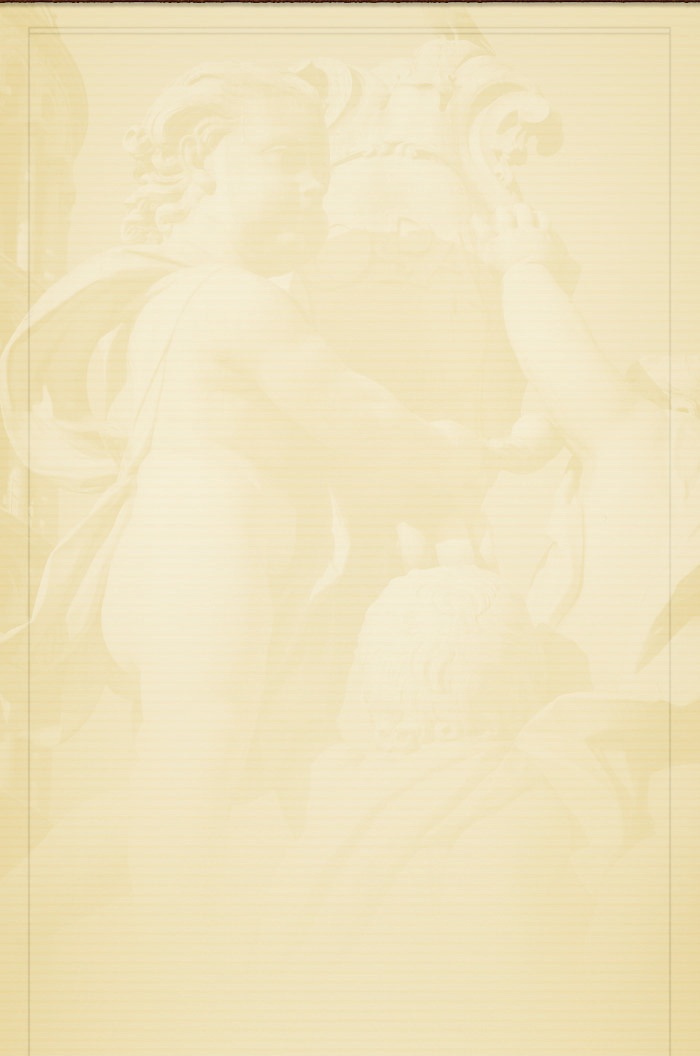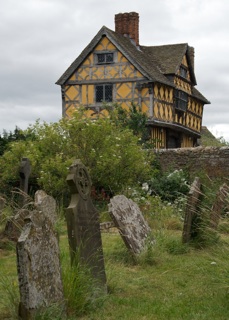
After Stokesay we checked out a few more spots in Wales and then came back to England and a visit with Rick’s cousin Des (and extended family) who lives in Codsall, near Birmingham. They threw a terrific party for us, with relatives from all around; we spent several days visiting and checking out the area and dodging raindrops. We had a delightful dinner one evening in an eating establishment along one of the canals in the area. This is a very active scene in the summertime, with lots of pretty houseboats tied up along the banks. The dinner was great, too. Despite rumors to the contrary, the English do too have good food.
The day we spent in Birmingham was very nice. In many ways it’s just another city, and mostly too modern to be interesting. But there is an excellent city museum that was built about 1900; the building itself is totally cool, intricately decorated and with the most amazing Art Deco door handles in the ladies’ loo. And we were very lucky – the museum houses an amazing collection called the Shropshire Horde; there were no crowds and we got to view all the goodies unobstructed. The horde is a large find of Celtic remains that a farmer uncovered last year; lots of jewelry and other lovely items. This is a tremendous find, and Birmingham struggled mightily in order to get permanent possession of the materials; lucky for us they were successful.
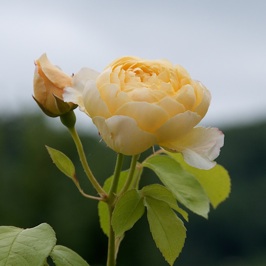
It’s the peak of summer now; all the gardens are in full bloom, and there are gardens absolutely everywhere. Not a single open patch is without color. We recognize most of the flowers; it’s all very homey. I had always heard that the roses in England were special because of all the moisture, and it is absolutely true.
By now we had decided on a plan for seeing some of “central” England. We would make a wide loop to the east, wandering East Anglia and the East Midlands, make a quick pass through the Peak District, touch base with Des & Sue again (and a newly discovered other branch of the family), then work south a bit through the West Midlands before heading back into Wales and then to Ireland. Got all that?
Also in Coventry a couple of days later we met Des for lunch (he brought us some mail we needed that had just missed us) and he showed us the ruins of the cathedral that had been bombed to bits during WWII. It was a tragedy, of course, one that might have been avoided, but the remains have been made into a memorial against war; it’s quite evocative. You won’t want to miss it. We are finding that meeting Des for lunch is quite brilliant; we get to chat, and he always has something special to show us that’s near where we meet. And he’s a great tour guide!
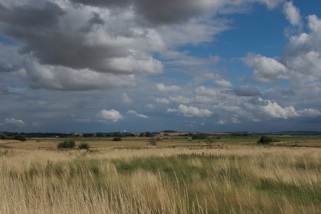
The villages in this area have great medieval churches; both are great fun to photograph. We stopped at Dedham and Stoke-by-Nayland on a Saturday; both had weddings either underway or just about to happen. Nervous brides, god-awful bridesmaid dresses, more hats than you could shake a stick at; the usual stuff. I caught a picture of the organist at one of them – in his shorts with a black robe covering what the attendees could see, and his long grey hair in ponytails. It was a hoot!
The villages had plenty of thatch-roofed cottages in them and we got to look at them up close. The thatch is in designs, sometimes quite intricate, with very fine netting over all, presumably to keep the birds from using the thatch for their nests; the cottages themselves are often Tudor-style, with half-timbering very common; lots of ivy. Quite picturesque. The villages have greens, and sometimes really strange names: we passed through both Steeple Bumpstead and Saffron Walden, we want you to know.

Duxford is not far from Cambridge, our next stop. We’d heard that the city was difficult to drive in, and followed a suggestion to leave the coach at the Park & Ride. It’s a cool deal; parking is free, and buses come every little while to (at a quite reasonable cost) take you to the center of town, where all the action is. Of course, as with so many parking lots in England, there was an entry barrier 2.2 meters high so we couldn’t just drive in. But there was a sign saying where to pull around to, how to find the guy to open the gate for you, etc. He walked over and let us in and showed us where to park, all with a nice smile. Not too shabby.
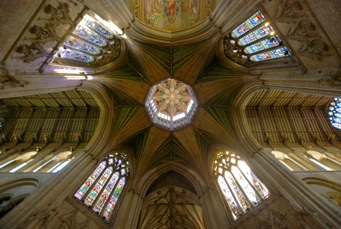
Ely is less than 20 miles north of Cambridge, and long anticipated by Kathy, who was hot to see the cathedral there. Very famous, it stands out for miles around, by far the tallest object in the area. The cathedral must have been quite astonishing to see when completed in the 1180s; it was one of the wonders of the medieval world. It’s still quite a sight, and one of our favorites so far.
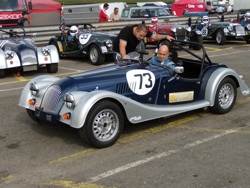
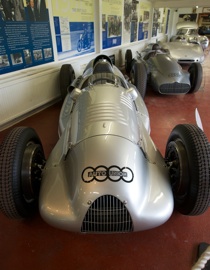
After that adventure we went back out toward the coast, starting a new loop to the east, this time into the Midlands. Immediately we were reminded that there’s still plenty of “country” left in England. Most people visit the big cities, particularly London; we’ve spent far more time out in the open countryside, visiting smaller towns and cities; we had been concerned that all of England was developed, but it just isn’t so! Despite a large population relative to its size, and lots of traffic issues, there really is plenty of lovely open agricultural land to enjoy.
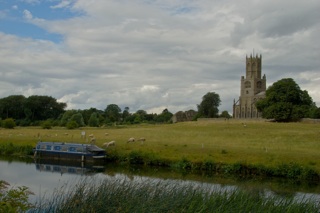
The Peterborough cathedral is quite magnificent, by the way; huge and dramatic and although Mary Queen of Scots “moved on”, Catherine of Aragon is buried there. It was really impressive and had the best presentation of historical information we’ve seen. One great display was the entire workings that had operated the clock in the cathedral tower for about 400 years. Wood framing and all the gears and mechanisms; it stood about eight feet tall and was quite impressive.
We had been hoping to get a look at one of the large manor houses we could see as we drove along, and we stopped at Burghley House near Stamford. Ultimately we decided not to go in; the description just didn’t sound special enough for the cost. But the park was open to all, and there were tame deer grazing and just waiting to be petted and fed. We had lunch, wandered the grounds, and felt quite satisfied.
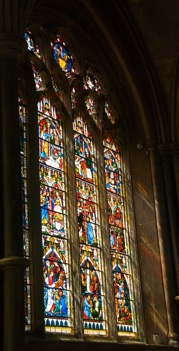
The church we visited was St. Botolph’s. Botolph was apparently a 7th century catholic monk. The town grew up around the church he founded, and originally was “Botolph’s Town” or “Botolph’s Stone”, from which the name eventually morphed into “Boston.” And of course the New England town was thusly named as well. St. Botolph’s is a worthwhile visit; there are excellent displays in the church about the Puritans, John Cotton, and the connection between the two Bostons.
Incidentally, many of the towns/cities we come across have very familiar names. It almost seems to us that nearly every city on the East Coast of the United States is named for a sister town in England.
Lincoln Cathedral was our last stop on the current tour. After all the other cathedrals we had seen, we were not as impressed as others might be, but the town itself is a charmer. Lincoln has maintained its medieval core, and besides the cathedral there are both a castle and a bishop’s palace to be seen. A word here: the bishop’s palace is a site that is managed by the English Heritage organization. If you go to Britain, please consider joining this group (you get into all their sites for free). Our membership has added a lot to the pleasure of being in Britain. The sites are always beautifully maintained and very informative, with free audio tours that explain in detail what you are seeing, as well as setting you down in the proper time in history. You understand what has happened, and why the site is important. So there – my push for today.
We were still on the Fens. I wanted to see the Wolds. They were a bit further north, up the coast. What were Wolds? Well, didn’t get there, and still don’t know for sure, although we’re told that they are simply hilly spots among the flatness of the Fens. Commitments were taking us further west again. We had only a couple of days left before we were set to spend some time with a newly discovered cousin, who lives near Derby, in the Peak District. Aha! This would be our chance to see a little of that rural, parkland area. Being further west again, we found ourselves back in green countryside, with stone walls dividing the fields.
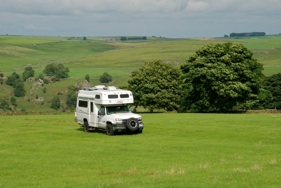
We stopped in Eyam (rhymes with “cream”) a town that was hit by the plague in the 1600s, and is famous for having simply closed itself off; no one was allowed to either enter or leave the village. Their action kept the plague from spreading, and although a large percentage of the population of the village died, much scientific study has resulted because they kept excellent records of who became ill and who did not. What courage! There is an excellent museum in Eyam, with a lot of good information on the village, and also about what the scientific community does and doesn’t know (even today) about where bubonic plague originates and how it is spread.
We had a delightful visit with newly discovered cousins in the Derby area (Daaarby, to you); fun people and we are happy to welcome them into the extended family. Debbie is Rick’s second cousin (we think this is accurate, her grandfather is Rick’s grandmother’s brother). She and husband Pete made us most welcome and we had a great time. We then dropped back down into the Birmingham area for quick hugs and more mail from Des and Sue (we also had a lovely Sunday afternoon cream tea in a vineyard nearby, and a nice introduction to Indian food as well). Des and Sue are good folks, and they’re kind enough to say they are always happy to have us around. And…Clotted cream is to die for!!
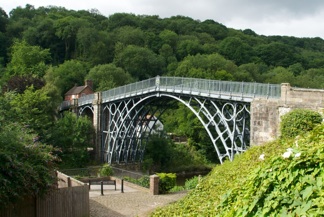
More important to us was Wroxeter Roman City, not far away. This was the fourth largest Roman city in ancient Britain; the ruins are fascinating and the information about the site is extensive. From the second to the fifth century, the city had a population of almost 5,000 people, and extended 47 blocks covering over 150 acres. The excavated area is the very center of the city and particularly shows the baths. The information presented on the construction and use of the baths and their importance as the focal point of the entire city was amazingly well done. It was a really terrific place to visit and by far our best Roman ruins site to date. It is another English Heritage site. Oh, the wall Kathy is leaning on below was constructed in 121 AD!
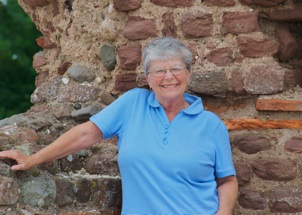
Our expenses are staying under control. This is despite the fact that we are covering more ground each month than we had ever thought would be necessary (about 1,500 miles per month), with the accompanying fuel costs (currently about $6.90/gallon for diesel). We simply don’t eat out very often, and tend to stay away from costly/touristy locations. While we do find Britain to be more expensive than the continent in terms of fuel and groceries, eating out seems a bit less expensive, and overall our expenses are lower than we’d anticipated; always good news. One huge factor in our favor is that the Pound is at only about $1.50 right now, compared to around $2 as recently as last year.
The English economy is suffering along with all the rest. Times are hard; one evidence of this is that pubs are having to close due to a lack of clientele. Seems like a sacrilege.
Oddities: A cattery is like a kennel – for felines. Digestives are lovely biscuits you have with your tea. A carvery is a big buffet at a restaurant or pub. The Brits talk about the British Isles as separate from “Europe”; we would call it “the continent” but they do not. English cars have license plates both front and back; the ones in front are white, the ones in back are yellow. Who knew?
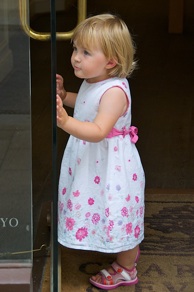
And no surprise here, the term peaches and cream as used to describe one’s complexion... look no further, it came from right here.
Well, the road beckons still, and Ireland awaits us. We hope you are all well and enjoying life each and every day. Our title to this message, by the way, comes from a poem by William Blake. The poem later became a hymn, and you film-buffs may recognize it as “Jerusalem” sung by the ladies in the movie, “Calendar Girls”.
Til the next time,
Rick & Kathy, et al.
